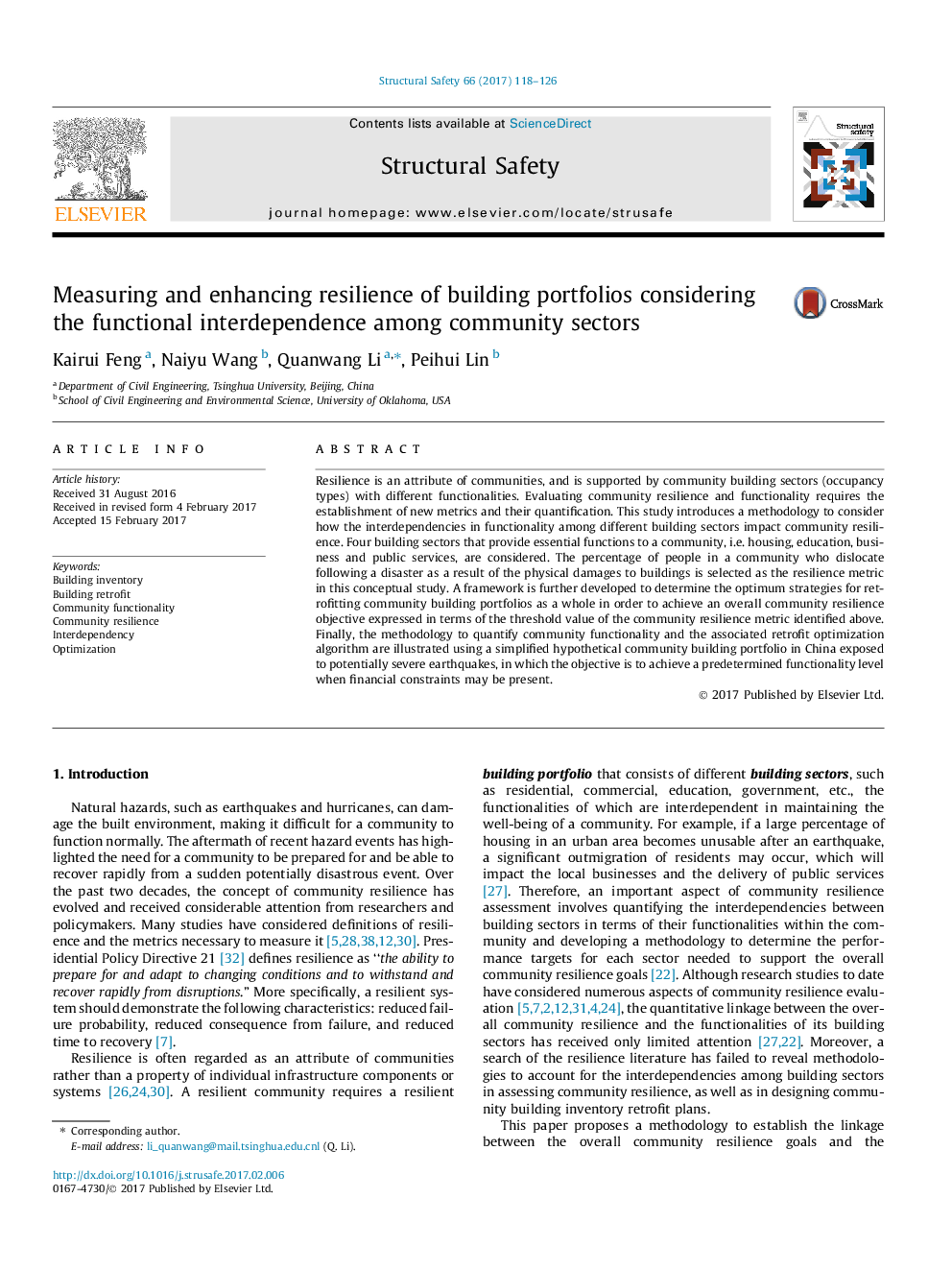| Article ID | Journal | Published Year | Pages | File Type |
|---|---|---|---|---|
| 4927837 | Structural Safety | 2017 | 9 Pages |
Abstract
Resilience is an attribute of communities, and is supported by community building sectors (occupancy types) with different functionalities. Evaluating community resilience and functionality requires the establishment of new metrics and their quantification. This study introduces a methodology to consider how the interdependencies in functionality among different building sectors impact community resilience. Four building sectors that provide essential functions to a community, i.e. housing, education, business and public services, are considered. The percentage of people in a community who dislocate following a disaster as a result of the physical damages to buildings is selected as the resilience metric in this conceptual study. A framework is further developed to determine the optimum strategies for retrofitting community building portfolios as a whole in order to achieve an overall community resilience objective expressed in terms of the threshold value of the community resilience metric identified above. Finally, the methodology to quantify community functionality and the associated retrofit optimization algorithm are illustrated using a simplified hypothetical community building portfolio in China exposed to potentially severe earthquakes, in which the objective is to achieve a predetermined functionality level when financial constraints may be present.
Related Topics
Physical Sciences and Engineering
Engineering
Civil and Structural Engineering
Authors
Kairui Feng, Naiyu Wang, Quanwang Li, Peihui Lin,
